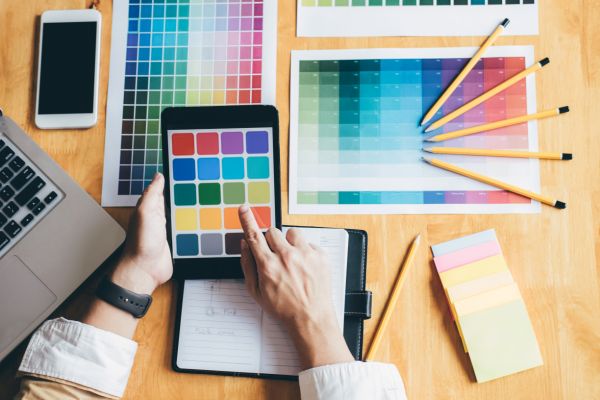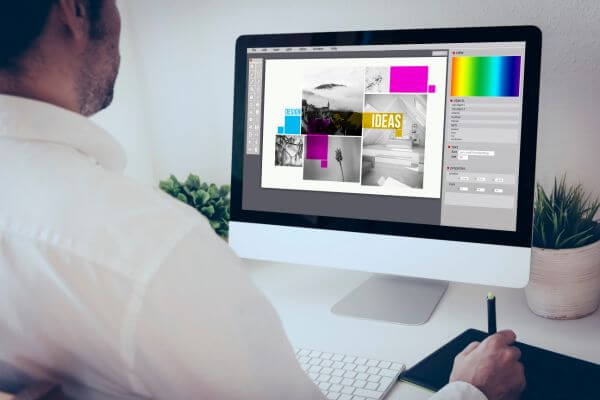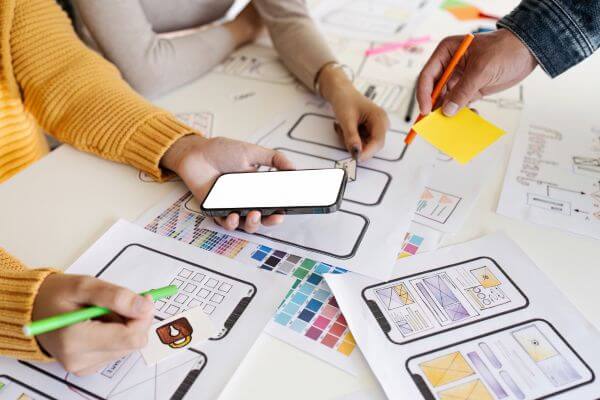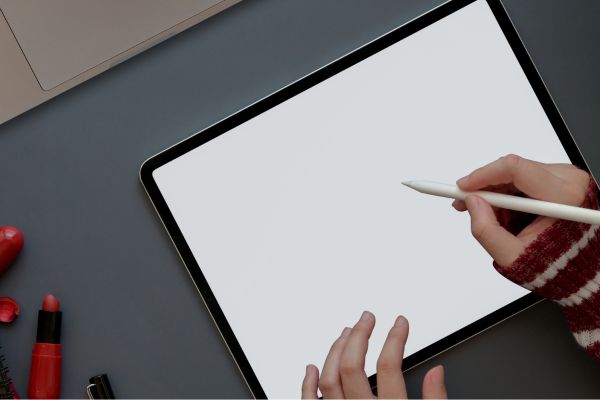From Concept to Completion: Tools Every Freelance Designer Should Know
As a design freelancer, it is crucial to be equipped with the right tools to enhance your creative process and ensure smooth project execution. Whether you are working on conceptualizing ideas or delivering the final product, having the right set of tools can make a significant difference in your success as a design freelancer. In this article, we will explore the essential tools that every design freelancer should know, from concept to conclusion.
Key Takeaways:
- Equip yourself with the necessary tools and software to streamline your design process
- Find inspiration and generate creative ideas through various techniques and resources
- Learn the importance of sketching and wireframing in creating effective user experiences
- Choose the right design software that suits your specific needs
- Optimize your design workflow and time management strategies for maximum efficiency
Finding Inspiration and Ideas
As a design freelancer, finding inspiration and generating creative ideas is crucial for staying ahead in the industry. In this section, we will explore various techniques and resources that can help ignite your creativity and set your work apart.
1. Explore Design Inspiration Platforms
Design inspiration platforms are a great starting point for sparking your creativity. Websites like Behance, Dribbble, and Awwwards showcase a wide range of design projects that can inspire new ideas. Take time to browse through different categories and styles to broaden your design horizons.
2. Follow Design Influencers and Thought Leaders
Keep yourself updated with the latest design trends and ideas by following influential designers and thought leaders in the industry. Social media platforms like Instagram and Twitter are excellent sources for discovering new talent and staying connected with design communities.
3. Experiment with Different Design Styles and Techniques
Don’t be afraid to step out of your comfort zone and try different design styles and techniques. Experimenting with new approaches can lead to unexpected creative breakthroughs. Push the boundaries of your design skills and challenge yourself to think outside the box.
4. Collaborate and Brainstorm with Peers
Join design communities and engage in collaborative projects with fellow designers. Brainstorming sessions and discussions can spark new ideas and insights. Sharing experiences and exchanging feedback can help you refine your design concepts and take them to the next level.
5. Keep a Design Inspiration Journal
Carry a design inspiration journal or use a digital note-taking app to capture ideas and inspirations that come to you throughout the day. Whether it’s a unique color combination you’ve noticed or a captivating typography style, documenting these inspirations will ensure you have a constant source of creative ideas.
By actively seeking design inspiration and nurturing your creative thinking, you can consistently produce innovative and compelling work that stands out from the crowd. Stay curious, explore new ideas, and let your creativity flourish.
Sketching and Wireframing
Sketching and wireframing are crucial steps in the design process, allowing you to visually articulate your ideas and create effective user experiences. By using these techniques, you can lay the foundation for well-structured layouts and intuitive interfaces in your freelance design projects.
When it comes to sketching, don’t worry about creating polished, refined artwork. Instead, focus on capturing your initial concepts and exploring different design possibilities. By sketching freely, you can quickly iterate and refine your ideas without getting caught up in the details.
Pro tip: Use a sketchbook or digital sketching software to bring your ideas to life. Experiment with different styles, perspectives, and layouts to determine the best direction for your design.
Once you have a solid sketch, it’s time to move on to wireframing. Wireframes are like blueprints for your design, outlining the structure and functionality of your digital product. They help you plan the placement of elements, such as navigation menus, buttons, and content areas, ensuring a seamless user experience.
Pro tip: There are various tools available for creating wireframes, such as Adobe XD, Sketch, or Figma. Choose the one that best suits your needs and allows for easy collaboration with clients and developers.
Wireframes can be simple, black and white representations or more detailed, depending on the complexity of your design. Use placeholder text and images to give an overall sense of the layout and flow of your design. By wireframing, you can identify potential usability issues early on and make necessary adjustments before investing time in visual design.
By incorporating sketching and wireframing into your design process, you can save time, communicate your ideas effectively, and ensure a user-centric approach. These techniques lay the groundwork for a successful project, setting you up for smooth execution and client satisfaction.
Choosing the Right Design Software
As a design freelancer, selecting the right design software is crucial for creating professional and impactful graphic designs. With a wide range of options available, it can be overwhelming to determine which software is best suited for your projects. In this section, we will guide you through the process of choosing the ideal design software that aligns with your creative needs and enhances your workflow.
When selecting design software, it’s essential to consider your specific design requirements, such as whether you focus on illustrations, website design, or print materials. Here are some industry-leading design software options to explore:
Adobe Creative Cloud
Adobe Creative Cloud is a comprehensive suite of design software that includes popular tools like Photoshop, Illustrator, and InDesign. These tools offer robust features and capabilities for creating stunning visuals, editing photos, designing logos, and preparing print-ready files.
Figma
Figma is a cloud-based design tool that enables collaborative work on user interfaces and web designs. With its intuitive interface and real-time collaboration features, Figma is ideal for multi-disciplinary teams working on complex projects.
Sketch
Sketch is a vector-based design tool designed specifically for macOS. It is widely used by UI and UX designers for creating user interfaces, icons, and interactive prototypes. Sketch offers a streamlined workflow and an extensive library of plugins and integrations.
These are just a few examples of the many design software options available in the market. To make an informed decision, assess your design goals, budget, and the specific features that are crucial to your workflow. Consider also exploring trial versions or demos to test the software’s compatibility with your design process.
By choosing the right design software for your freelance projects, you can enhance your design capabilities, improve efficiency, and create exceptional visuals that leave a lasting impression.
Streamlining Your Design Workflow
As a freelance designer, it’s crucial to optimize your design workflow to maximize productivity and meet client deadlines. Effective time management is key to achieving these objectives. By implementing the right strategies and utilizing the appropriate tools, you can streamline your design process and work more efficiently. Here are some tips and techniques to help you enhance your design workflow and manage your time effectively.
1. Prioritize Tasks
To stay organized and focused, start each day by prioritizing your design tasks. Identify the most critical and time-sensitive projects, and tackle them first. Breaking down larger projects into smaller, manageable tasks can also help you manage your time effectively and prevent overwhelm.
2. Create a Design Schedule
Having a clear schedule for your design work can greatly improve your time management. Allocate specific time slots for different stages of the design process, such as ideation, sketching, wireframing, and finalizing the design. This will help you stay on track and avoid unnecessary delays.
3. Utilize Project Management Tools
Project management tools can be a game-changer when it comes to streamlining your design workflow. Consider using tools like Trello, Asana, or Monday.com to create task lists, set deadlines, and track your progress. These tools also enable better communication and collaboration with clients or team members.
4. Automate Repetitive Tasks
Identify tasks that you regularly perform and consider automating them. For example, you can set up email templates or use design templates for common design elements. Automating repetitive tasks frees up time for more creative and high-value work.
5. Take Breaks
Avoid burnout and maintain productivity by incorporating regular breaks into your work schedule. Schedule short breaks between tasks to recharge your mind and prevent mental fatigue. This will help you maintain focus and quality in your work.
6. Use Design Collaboration Tools
Collaboration tools like Figma, InVision, or Adobe XD allow you to share your design work with clients and receive real-time feedback. This streamlines the feedback process and minimizes the need for lengthy email threads or in-person meetings.
By implementing these strategies and utilizing valuable tools, you can optimize your design workflow and improve your time management as a freelance designer. Enhancing your efficiency will not only ensure client satisfaction but also enable you to take on more projects and grow your freelance design business.
| Benefits of Streamlining Your Design Workflow | Techniques and Tools to Implement |
| Increased productivity | Prioritizing tasks |
| Meeting client deadlines | Creating a design schedule |
| Improved time management | Utilizing project management tools |
| Reduced stress and burnout | Automating repetitive tasks |
| Enhanced collaboration and communication | Using design collaboration tools |
Presenting and Receiving Feedback
When it comes to showcasing your design work to clients, effective presentation is key. It’s not just about creating visually engaging designs; it’s also about effectively communicating your design decisions and eliciting valuable feedback. By following these tips, you can navigate the presentation process with confidence and make revisions that align with your client’s vision.
1. Tailor your presentation to the client’s needs
Before the presentation, take the time to understand your client’s preferences and goals. Consider their target audience, brand identity, and any specific requirements they may have. Tailor your presentation accordingly to showcase how your design meets their unique objectives.
2. Clearly communicate your design decisions
During the presentation, explain the reasoning behind your design choices. Highlight how your design aligns with the client’s objectives and effectively communicates their message. This will help clients understand and appreciate your design decisions, fostering trust and collaboration.
3. Use visual aids to enhance understanding
A picture is worth a thousand words. Utilize visual aids such as mood boards, mockups, and prototypes to enhance the client’s understanding of your design concept. These visual representations can help bridge the gap between imagination and realization, making it easier for clients to provide feedback and make informed decisions.
4. Actively listen and ask for feedback
During the presentation, actively listen to the client’s thoughts and concerns. Encourage them to provide feedback and ask questions. This dialogue allows you to gain insights into their perspective and identify areas of improvement. Remember, feedback is a valuable tool for refining your design and meeting client expectations.
5. Make revisions based on client input
After receiving feedback, analyze it objectively and identify areas that can be improved. Use client input as a guide to make revisions that align with their vision. Ensure that you clearly document these revisions and communicate them effectively to the client.
6. Establish clear channels of communication
Effective client communication is crucial throughout the design process. Establish clear channels of communication, such as scheduled check-ins or project management tools, to ensure open and consistent dialogue. This fosters collaboration, minimizes misunderstandings, and strengthens the overall client-designer relationship.
| Benefits of Effective Presentation and Feedback | Client Satisfaction | Design Optimization | Stronger Relationships |
| Clear understanding of design concept | Alignment with client’s vision | Refinement of design based on client feedback | Increased trust and collaboration |
| Easier identification of improvements | Opportunity for client input and involvement | Enhanced project outcomes | Client loyalty and potential referrals |
Managing Finances and Contracts
As a design freelancer, effectively managing your finances and contracts is crucial for the success and sustainability of your business. By implementing these tips, you can ensure smooth financial operations and establish strong contractual agreements with your clients.
1. Invoicing
Accurate and timely invoicing is essential for maintaining healthy cash flow as a freelance designer. Create professional invoices that clearly outline your services, fees, and payment terms. Use online invoicing tools to streamline the process and track your payments efficiently.
2. Payment Terms and Late Fees
When creating contracts with your clients, clearly define your payment terms and include provisions for late fees. This will incentivize timely payments and protect your financial interests. Clearly communicate your payment expectations to clients to avoid any misunderstandings.
3. Budgeting and Expense Tracking
Manage your freelance finances by creating a budget and tracking your expenses. This will help you understand your income and expenditures, allowing you to make informed financial decisions. Use accounting software or spreadsheets to organize your financial records effectively.
4. Contract Negotiation
Negotiating contracts is an essential skill for every design freelancer. Clearly define project scope, deliverables, timelines, and payment terms in your contracts. Seek legal advice if necessary and ensure that both parties have a solid understanding of the agreement.
5. Intellectual Property Rights
Protect your work by including intellectual property clauses in your contracts. Clearly specify the ownership and usage rights of the design assets you create. This will help you avoid any legal disputes and ensure that you maintain control over your artistic creations.
6. Client Communication
Establish clear lines of communication with your clients regarding finances and contracts. Respond to inquiries promptly and address any concerns or issues. Building strong client relationships through effective communication will contribute to your overall success as a freelance designer.
7. Seeking Professional Help
If managing your finances and contracts becomes overwhelming, consider seeking professional help from accountants or lawyers who specialize in freelance businesses. They can provide valuable guidance and ensure that you comply with relevant laws and regulations.
| Expense | Monthly Cost |
| Software Subscriptions | $100 |
| Office Rent | $500 |
| Utilities | $150 |
| Marketing Expenses | $200 |
| Insurance | $50 |
By implementing these strategies, you can ensure smooth financial operations and establish strong contractual agreements. Remember, managing your finances and contracts effectively will contribute to your overall success as a design freelancer, allowing you to focus on what you do best – creating amazing designs for your clients.
In conclusion, this article has provided valuable insights into the essential tools and tips that every design freelancer should be familiar with. By incorporating these dicas para design freelancer into your workflow, you can elevate your skills, optimize efficiency, and thrive in the competitive landscape of freelance design.
By exploring various sources for design inspiration and generating creative ideas, you can bring unique perspectives to your projects and differentiate yourself as a freelancer. The importance of sketching and wireframing cannot be understated, as they lay the foundation for effective user experiences and layout structures.
Choosing the right design software is crucial for maximizing your potential as a designer. Understanding the features and capabilities of different software options empowers you to select the most suitable tool for your specific needs. Additionally, streamlining your design workflow and implementing effective time management strategies will enable you to meet client deadlines and deliver high-quality work consistently.
Presenting your designs effectively and receiving constructive feedback from clients is an integral part of the freelance design process. By effectively communicating your design decisions and incorporating client input, you can deliver designs that align with their vision and expectations.
Lastly, managing your finances and contracts is vital in ensuring the financial success of your freelance design career. With proper invoicing practices and contract management, you can maintain a healthy cash flow and build strong, professional relationships with your clients.
By incorporating these strategies and tools into your freelance design journey, you can sharpen your skills, enhance client satisfaction, and ultimately propel your career to new heights. So, embrace these tips, take action today, and pave the way for a successful future as a design freelancer.





